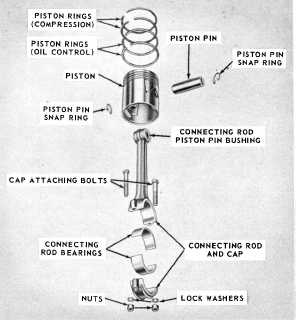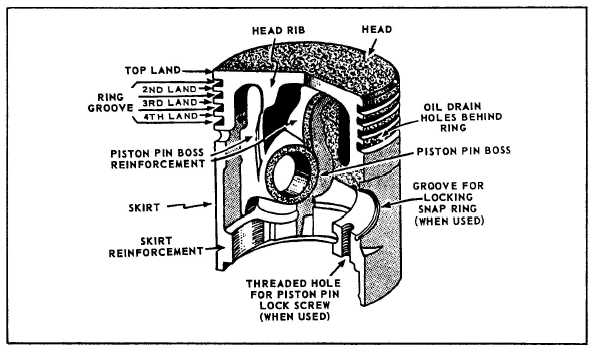Figure 12-13.—Piston and connecting rod (exploded
view).
a carrier for the piston rings used to seal the
compression in the cylinder. (See. fig. 12-13.)
The piston must come to a complete stop at the
end of each stroke before reversing its course in the
cylinder. To withstand this rugged treatment and
wear, it must be made of tough material, yet be light
in weight. To overcome inertia and momentum at
high speed, it must be carefully balanced and
weighed. All the pistons used in any one engine must
be of similar weight to avoid excessive vibration. Ribs
are used on the underside of the piston to reinforce
the hand. The ribs also help to conduct heat from the
head of the piston to the piston rings and out through
the cylinder walls.
The structural components of the piston are the
head, skirt, ring grooves, and land (fig. 12-14).
However, all pistons do not look like the typical one
illustrated here. Some have differently shaped heads.
Diesel engine pistons usually have more ring grooves
and rings than gasoline engine pistons. Some of these
rings may be installed below as well as above the
wrist or piston pin (fig. 12-15).
Fitting pistons properly is important. Because
metal expands when heated and space must be
provided for lubricants between the pistons and the
cylinder walls, the pistons are fitted to the engine
with a specified clearance. This clearance depends
upon the size or diameter of the piston and the
material form which it is made. Cast iron does not
expand as fast or as much as aluminum. Aluminum
pistons require more clearance to prevent binding or
seizing when the engine gets hot. The skirt of bottom
part of the piston runs much cooler than the top;
therefore, it does not require as much clearance as
the head.
Figure 12-14.—The parts of a piston.
12-14



